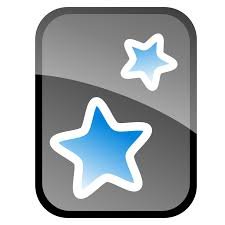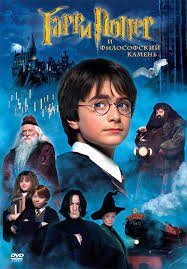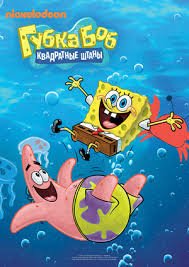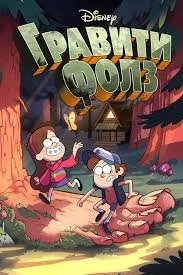
Russian Resources
Here are some Russian resources that I have collected over the years and a guide to getting started!
**(Web version recommended for this page!)
A1 – “Privet, kak dela?” and that’s it.
You know how to say hi, the bad words, yabloko, and that's it. You and your Duolingo streaks against the world.
A2 – I can understand, but please speak slowly
You know the alphabet, can read menus, and maybe ask for water if you rehearsed the sentence 3 times.
B1 – I understand the gist
You still translate in your head, but at least it’s not every single word. You believe true fluency is 6 months away. (It’s not. But keep going.)
B2 – I watch Netflix without subtitles
You can follow fast convos, talk about opinions, and rant about TV shows. You still look up fancy words and make a few grammar mistakes.
C1 – Fluent-ish
You can understand complex texts, podcasts, and debates. You're officially past the “aww you’re learning Russian?” stage.
C2 – Native speaker level
You can read Dostoevsky.
Not sure where you are? Take the Test.
This quick test that will help you figure out your level in Russian.
The test was created by Irina Baginskaya, a highly qualified Russian language educator with over a decade of experience teaching Russian to non-native speakers, and degrees from Saint Petersburg State University and Pushkin State Russian Language Institute!
Language levels come from something called the CEFR, which stands for the Common European Framework of Reference for Languages. It’s basically a universal system that tells you how well someone can use a language.
Beginner and Upper Beginner Level
Get these:
Download these:
Watch these:
Do these:
Follow them:
Drops (mini vocabulary practice)
Cheburashka
Beginner level Russian cartoons
2 Week Study Plan
If you need more structure, here are A1 and A2 in-depth guided lessons with videos, online worksheets, and writing assignments!
(Click the circles!)
Before you begin, here are some tools you’ll need in your toolbox!
Download Anki or Quizlet for flashcards
LingQ for structured mini lessons
Russian Winnie the Pooh
Make a Personal Vocab List
Pay attention to the words you use the most in daily life. Are you always talking about school? Music? Food? Write down your top 100 and add them to Anki or Quizlet + the general most common 100 Russian words. These words will be your foundation.
Label objects around your room in Russian with sticky notes, and say them out loud every time you see them!
Singing
Learn an entire song! Focus on one and try to learn all of the lyrics. This will also help you imitate native pronunciation.
Here’s an example of a 2-week study plan for a beginner. At this stage you want to get as much input as possible and form the habit of language study. Don’t worry about textbooks for now. You can use this as a guide to plan your own!
LingoPie for comprehensible input
A1 & A2 Milestones Based on University-Level Syllabi
This section shows you what topics to cover and what you should be able to do by the end of an A1 and A2 level with resources!
Notebooks for journaling and staying organized
Yandex Translator
Smeshariki
Pokoyo (Russian version)
Change your phone language
Switch your phone (and apps like TikTok & Instagram) to Russian.
Pimsleur (Audio lessons)
Masha and The Bear
Peppa Pig (Russian version)
Journaling
Write 1 paragraph about your day everyday in Russian. It’s okay if you use a translator! Focus on routine things like what you did or how you felt.
-
-
Talking about your university/school & Saying what you study or where you go
Describing your daily routine
Greetings and goodbyes & Talking about your name and where you're from
Saying who someone is (this is my friend...) & Talking about your family and what you have
Nationalities & languages & Describing where someone lives
-
Core Grammar
Nouns & Pronouns
Grammatical gender
Personal pronouns: он, она, оно, они
Possessive pronouns: мой, твой, его, её, наш...
Cases
Nominative case (subject)
Prepositional case
Verbs
Present tense conjugation
Basic verbs: жить, учиться, говорить, любить
Introduction to motion verbs: идти, ехать
Past tense
Sentence Structure
Word order (Subject–Verb–Object)
Basic question words (где, что, кто)
Simple conjunctions (и, но, а)
-
Link to practice tests:
https://ketimasw2.blogspot.com/2020/10/112-1-1.html?spref=pi&m=1&ssp_iabi=1677865219418
A1: Pages 8-39
A2: Pages 42-80
ТРКИ stands for Test of Russian as a Foreign Language (TORFL), and it's the official Russian state exam used to assess Russian language proficiency for non-native speakers.
Intermediate level
At this point, you’re comfortable with your routine, and the Cyrillic alphabet doesn’t scare you anymore. You can start exploring more advanced videos, listening to native conversations, and picking up vocabulary through real-world content
Watch these:
Where to watch:
Better than People
Avatar the Last Airbender
Any Disney/ Pixar Movie. (Try to learn the songs!)
Friends
It’s the Russian Netflix. You can find dubbed versions of popular shows like Game of Thrones, Succession, or movies like Shrek!
The Office
4x4 Intermediate Study Schedule
(via: Language Lords)
This approach is broken into four focused blocks: Speaking, Reading/Accent, Vocabulary, and Listening. Altogether, it takes about 3–4 hours a day, but you can scale it up or down based on your schedule.
This exercise is great for developing speaking skills!
Speaking Practice – 1 hour
Reading/Accent Practice – 30 minutes
Listening Practice – 1 hour
Harry Potter (1st movie)
Russia’s social media site that’s also home to tons of shared videos, movies, and series. just type ‘вк’ at the end of whatever you want to watch in google, it should be there!
SpongeBob (Russian version)
This section tells you what topics to cover and what you should be able to do at the end of the B1 and B2 level with resources!
Not Born Beautiful
Gravity Falls
Netflix has lots of Russian dubs for popular shows such as: ‘You’, ‘Squid Games’, ‘Bridgerton’, ‘Money Heist’, ‘Emily in Paris’, ‘The Umbrella Academy’, ‘Bojack Horseman’, ‘Narcos’…
Goal: Practice monologuing and build comfort with speaking freely—even when you forget words.
Step-by-Step:
Pick a topic like “My Daily Routine,” “My Favorite Movie,” “A Place I Want to Visit.”
Speak for 5–10 minutes, out loud, in your target language.
If you forget a word (e.g. “to wash dishes”), just say it in English and keep going.
Don’t pause. Practice the flow (this simulates real conversation.)
Record yourself with your phone.
Listen back and write down every word or phrase you switched to English for.
Look up those words and write them down in a notebook or doc.
Try again—retell the same story.
Repeat the story 2–3 times. Write down any words you missed and add them to Anki or Quizlet.
The next day, review your Anki deck first, then talk about it again. When you can speak for 5-10 minutes without using an English word, you can move on!
Tip: If you're stuck at the beginning, say the story entirely in English first to get your thoughts organized—then switch to your target language.
Goal: Improve your speaking rhythm, clarity, and accent by training your ear.
Example Resource: A short article or transcript about a topic you enjoy
Step-by-Step:
Read 1–2 paragraphs out loud from an article or story in your target language.
If you can’t pronounce a word, type it into Google Translate or use Forvo to hear the correct pronunciation.
Keep a list of common words you struggle with—especially if they’re words you want to use when speaking.
After each section, listen to 2 minutes of a native speaker (YouTube vlog, podcast, audiobook)—then go back to reading.
Vocabulary Review – 30 minutes
Goal: Focus only on the words you actually need—no massive vocabulary lists.
Example Words: From your “Daily Routine” monologue you might have: to brush teeth, schedule, dish soap, slippers.
Step-by-Step:
Open your list from speaking and accent practice.
Review those words in your custom Anki deck or write them out with example sentences.
Don’t just memorize—say them out loud and try using them in new sentences. As much as possible connect vocabulary to context! Try not to have single words on flashcards.
Goal: Train your brain to hear natural language and absorb real pronunciation.
Step-by-Step:
Pick a video that matches your current level.
Watch once with English subtitles, then again with target language subtitles, and eventually no subs.
Listen for how words are pronounced informally, and mimic short sentences aloud.
Add any new or useful words to your vocab list and review later.
B1 & B2 Level Milestones Based on University Level Syllabi
-
Description text goes here
-
Description text goes here
-
Description text goes here
Here are some of the best books, sites, and apps I’ve used that have helped me!
-
LingQ – A reading and listening app that lets you learn Russian through real content like articles and podcasts. Great for building vocabulary in context.
Drops – A visual vocabulary app that helps you learn key Russian words through short, daily sessions. Great for beginners or busy learners.
Pimsleur – An immersive language program that teaches Russian through listening and guided lessons, without translations.
Yandex Translate – A powerful Russian-English translator and dictionary with example sentences, voice input, and pronunciation. More accurate than Google Translate for Russian.
-
Short Stories in Russian for Beginners
https://www.amazon.com/dp/1529361667
A collection of short stories designed to build vocabulary and comprehension in context—ideal for beginner to lower-intermediate learners.Mezhdunami (Между нами)
https://www.mezhdunami.org/
A free, open-access Russian textbook designed for university students and independent learners. Includes videos, listening activities, grammar explanations, and cultural insights.Free Russian Textbooks!:
https://ketimasw2.blogspot.com/2021/08/3.html?spref=pi&m=1
https://ketimasw2.blogspot.com/2021/07/blog-post_81.html?spref=pi&ssp_iabi=1683489297895&m=1
-
Easy Russian
https://www.youtube.com/@EasyRussianVideos
Authentic street interviews with subtitles in Russian and English. Great for beginners!Amazing Russian
https://www.youtube.com/@AmazingRussian
If you prefer to have a teacher guide you through lessons w/ homework she’s for you!Be Fluent in Russian
https://www.youtube.com/@BeFluentInRussian
Fedor really helped me with common grammar rules that articles and textbooks overcomplicated!In Russian from Afar
https://www.youtube.com/@InRussianfromAfar
This channel is super great for beginners and intermediate learners! (The sock puppets are super cute).Learn Russian with Ari
https://www.youtube.com/@LearnRussianwithAri
Real tips from someone who self-taught themselves Russian!Real Russian Club
https://www.youtube.com/@RealRussianClub
Daria is the best!! She’ll break down grammar cases, walk you through storybooks and give you great tips!O Russkom Po Russki (О русском по-русски)
https://www.youtube.com/@orusskomporusski
These lessons are FULLY in Russian that break down grammar and usage for intermediate to advanced learners.Russian Radio Show
https://www.youtube.com/@RussianRadioShow
Podcasts and talk-show-style videos in slow, clear Russian. Perfect for listening practice and casual language exposure.Russian With Max
https://www.youtube.com/@RussianWithMax
Comprehensible input in natural Russian. Max is great and he also has videos from beginner to advanced!
-
Yale Russian Poetry – Pushkin Archive
http://russianpoetry.yale.edu/poet/pushkin.html
A curated collection of Alexander Pushkin’s poetry with translations and historical notes. Great for literature lovers and advanced learners exploring Russian classics.О русском по-русски (O Russkom Po Russki)
https://www.orusskomporusski.com/
A site designed for intermediate to advanced learners, fully in Russian. Offers blog posts, grammar explanations, and listening content to build immersion and comprehension.RussianPod101
https://www.russianpod101.com/
A structured audio/video-based program with lessons from absolute beginner to advanced. Includes vocabulary lists, dialogues, grammar notes, and cultural tips.Russian For Free
https://www.russianforfree.com/
A free resource with grammar lessons, audio dialogues, reading texts, and vocabulary practice. Suitable for beginners and intermediate learners on a budget.CEERES – University of Chicago Russian Language Resources
https://ceeres.uchicago.edu/russian-language-resources
A comprehensive academic resource hub offering links to online dictionaries, textbooks, grammar tools, and heritage learner resources curated by UChicago’s Center for East European and Russian/Eurasian Studies.
-
Here are some great artists! (in my humble opinion):
Miyagi, Dakooka, Molchat Doma, IC3PEAK, мы, Instasamka, Montetochka, ooes, Zemfira, Peremotka, Ploho, Katya Chilly, Mujuice, WaveWind
Podcasts:
Russian Heroes:
https://www.youtube.com/watch?v=iH-x9Y5Dh-s&list=PLUr6Cy1lgKGd3umD4lHP_TCpt6wPoYyxf
Easy Russian:
https://www.youtube.com/watch?v=oM8eHOONclY&list=PLxRXPwbJodj-U2sAJ5Q4mgqaTnqUGm5Mv
Russian With Max:
https://www.youtube.com/watch?v=aORe6G7a64w&list=PLNHnL8hclQYty0cIuxaCz-cQSybuF8xi4
Introvert’s Right Hemisphere (Правое полушарие Интроверта):
https://www.youtube.com/@artforintrovert
It’s Delicious! (Food/Cooking)
-







































